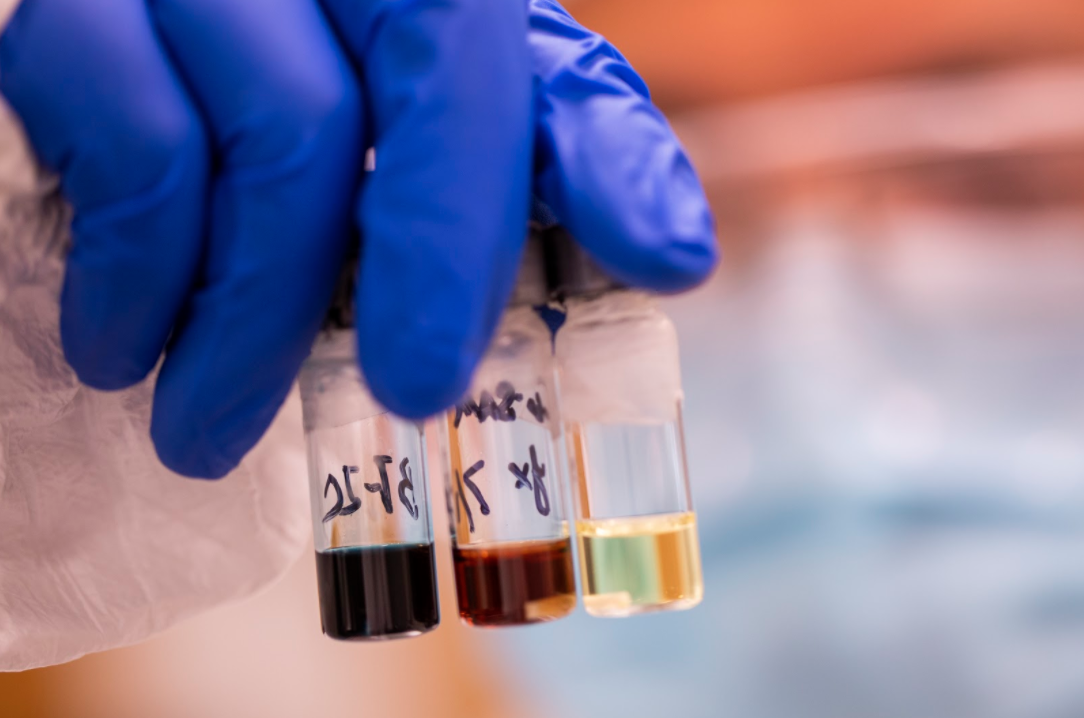In a step closer to skyscrapers that serve as power sources, a team led by University of Michigan researchers has set a new efficiency record for color-neutral, transparent solar cells.
The team achieved 8.1% efficiency and 43.3% transparency with an organic, or carbon-based, design rather than conventional silicon. While the cells have a slight green tint, they are much more like the gray of sunglasses and automobile windows.
“Windows, which are on the face of every building, are an ideal location for organic solar cells because they offer something silicon can’t, which is a combination of very high efficiency and very high visible transparency,” said Stephen Forrest, the Peter A. Franken Distinguished University Professor of Engineering and Paul G. Goebel Professor of Engineering, who led the research.

Yongxi Li holds up vials containing the polymers used to make the transparent solar cells. Image credit: Robert Coelius, Michigan Engineering Communications & Marketing
Buildings with glass facades typically have a coating on them that reflects and absorbs some of the light, both in the visible and infrared parts of the spectrum, to reduce the brightness and heating inside the building. Rather than throwing that energy away, transparent solar panels could use it to take a bite out of the building’s electricity needs. The transparency of some existing windows is similar to the transparency of the solar cells Forrest’s group reports in the journal Proceedings of the National Academy of Sciences.
[…]
The color-neutral version of the device was made with an indium tin oxide electrode. A silver electrode improved the efficiency to 10.8%, with 45.8% transparency. However, that version’s slightly greenish tint may not be acceptable in some window applications.
Transparent solar cells are measured by their light utilization efficiency, which describes how much energy from the light hitting the window is available either as electricity or as transmitted light on the interior side. Previous transparent solar cells have light utilization efficiencies of roughly 2-3%, but the indium tin oxide cell is rated at 3.5% and the silver version has a light utilization efficiency of 5%.
Both versions can be manufactured at large scale, using materials that are less toxic than other transparent solar cells. The transparent organic solar cells can also be customized for local latitudes, taking advantage of the fact that they are most efficient when the sun’s rays are hitting them at a perpendicular angle. They can be placed in between the panes of double-glazed windows..
Source: Transparent solar panels for windows hit record 8% efficiency | University of Michigan News

Robin Edgar
Organisational Structures | Technology and Science | Military, IT and Lifestyle consultancy | Social, Broadcast & Cross Media | Flying aircraft

